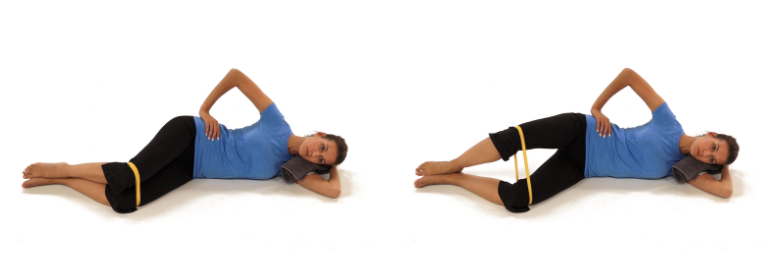Rethinking Glute Training: Why Clamshells Fall Short
Written on
Chapter 1: The Clamshell Controversy
In today's fitness landscape, there’s a significant focus on glute development. Many individuals engage in exercises targeting these muscles primarily for aesthetic reasons; however, the functional benefits of strengthening the hips are equally important. From everyday individuals to elite athletes, effective glute training can enhance performance and prevent injuries. Unfortunately, the abundance of information—including inaccuracies—surrounding this topic can be overwhelming.
A prevalent myth is the belief that the clamshell exercise is the ultimate choice for glute activation. At first glance, this exercise seems harmless and effective, but a closer examination reveals its shortcomings. It's time to reconsider the clamshell and explore better alternatives that promote safety and efficacy.
This article aims to clarify which exercises truly benefit your glutes and which ones are ineffective. Properly targeting all three glute muscles (gluteus medius, gluteus minimus, and gluteus maximus) is crucial for injury prevention and peak performance. Let’s dive into evidence-based approaches to improve your glute training!
Myth Busting the Clamshell Exercise

Image from Physiotec
The clamshell involves lying on your side with knees bent and lifting the top knee while externally rotating the hip. Many add resistance bands, believing this enhances the exercise's effectiveness. However, there are significant flaws with this approach.
Research by Moore et al. highlighted the inefficacy of clamshells. Through a systematic review of 56 studies, they categorized various glute exercises based on maximum voluntary isometric contraction (MVIC) levels. The clamshell ranked at the bottom among over ten hip-targeted movements.
Two primary issues contribute to this low ranking. Firstly, the initial position creates a short lever arm, making it easier to perform the exercise with limited range of motion and minimal muscular demand. On average, clamshells yield an MVIC of less than 20%, far below the 40% threshold necessary for effective strengthening.
Secondly, clamshells may provoke pain, particularly for those recovering from hip injuries. As noted by hip physiotherapist Mehmet Gem, "The clamshell has limited value in strengthening the hip and can exacerbate symptoms for patients with greater trochanteric pain syndrome or hip impingement."
While research offers valuable insights, it’s important to remember that it doesn't define absolute truths. If you've consistently performed clamshells without issues, they might not cause harm. Nevertheless, there are far more effective alternatives for challenging your glutes.
Chapter 2: Three Superior Exercises for Glute Activation
To ensure comprehensive strength across the glute muscles, it's essential to incorporate exercises that promote stability and support lower body mechanics. Here are three movements that effectively engage the glutes:
- Single-Leg Glute Bridge

Image from Physiotec
Recommended Application: 2–3 sets of 12–15 reps per side.
Instructions: Begin with one knee bent at a 45-degree angle while the other leg is fully extended. Engage your glutes to lift your hips, pressing through the planted foot. Maintain a neutral neck and engaged core. Exhale as you rise. To increase resistance, add weights near your pelvis.
- Lateral Step-Up to Single-Leg Squat

Image from Physiotec
Recommended Application: 2–3 sets of 8-10 reps per side.
Instructions: Stand on a step with one foot on the ground. Step up, fully extending your knee and glutes, then hinge into a single-leg squat. Keep your heel on the step and your knee aligned over your toes. This advanced movement may require support for balance. If too challenging, consider using a TRX for assistance.
- Side-Lying Abductions with Internal Rotation

Image from Physiotec
Recommended Application: 2–3 sets of 12–15 reps.
Instructions: Lie on your side comfortably (a pillow can help). Perform a straight leg raise while internally rotating your leg, focusing on raising your heel higher than your toes. Exhale while lifting and inhale while lowering. For added resistance, use a loop band or ankle weights.
In Conclusion
To optimize your glute training and support pelvic health, it’s time to set aside the clamshell exercise. Its ineffectiveness and potential risks outweigh its benefits. Research indicates that other exercises lead to improved muscle activation and functionality.
By committing to evidence-based glute training, whether for athletic performance or everyday activities, you can enhance your outcomes and proactively mitigate injury risks.
Now, let’s get started with some glute bridges!
-David Liira, Kin

You have read another insightful article from In Fitness And In Health, a community dedicated to sharing knowledge and promoting healthier lifestyles. To receive more articles like this, subscribe to our newsletter.